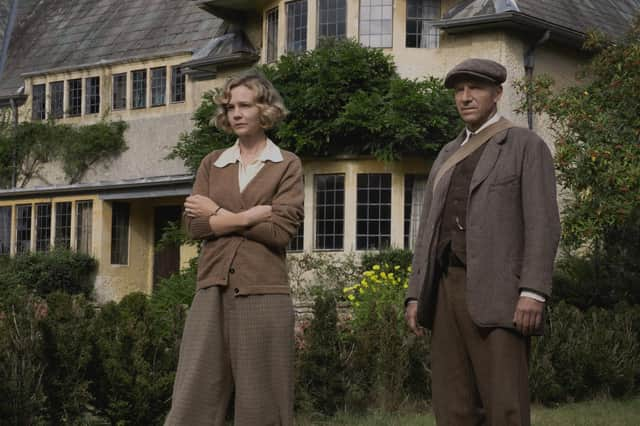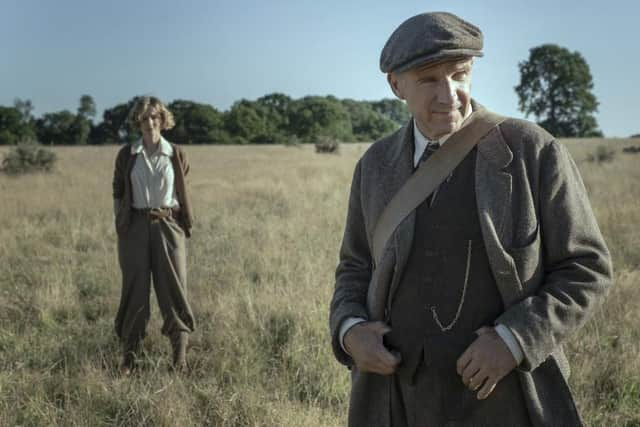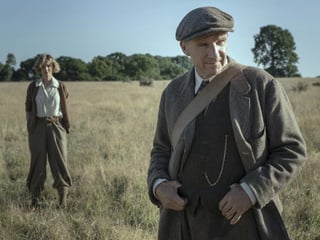Is The Dig a true story? The real events at Sutton Hoo that inspired the Netflix film explained


We’ve already taken a look at the filming locations for Netflix’s The Dig – a tale of archeology and romance set against the backdrop of an impending global conflict – and found that while the film is set in Suffolk, a lot of it wasn’t actually filmed there.
But is the film – centred around the famous Sutton Hoo excavation of an Anglo-Saxon burial ship in Suffolk – a true story?
Advertisement
Hide AdAdvertisement
Hide AdHow much of it actually happened, and can the film be used as an historical account?
Here is everything you need to know about it.
What happens in The Dig?
In The Dig, Ralph Fiennes plays Basil Brown, a self-taught, working-class archeologist.


He is hired by Edith Pretty (Carey Mulligan), who is convinced that treasures lie beneath the surface of the grassy burial mounds on her estate.
When Basil uncovers a site of great historical importance, British Museum archaeologist Charles Phillips (Ken Stott) and various members of the London establishment descend on Sutton Hoo to stake their claim to a site of national interest.
Is The Dig a true story?
Advertisement
Hide AdAdvertisement
Hide AdWhile the unearthing of one of the most important archaeological discoveries of all time did occur at Sutton Hoo, the version of events depicted in the book isn’t necessarily true to how they played out in real life.
That’s because the film is actually based on the novel of the same name by John Preston, itself a romanticised and fictionalised account of events first published in 2007.
Though the novel draws on recorded information about real archaeology, people and events, some facts have been altered to suit the author's literary purpose.
This is something Preston freely admits to, stating in an author's note in the book that "Certain changes have been made for dramatic effect".
Advertisement
Hide AdAdvertisement
Hide AdChanges are made in the book to everything from the chronology of the excavation (the real excavations took place over two seasons, but are merged into one in the novel) to the archaeological methods used, and the identity and contents of the various burial mounds.
Preston is actually the nephew of Peggy Piggott, one of the excavators of Sutton Hoo, though the author only became aware of the story around 2004, and so The Dig is not derived from her testimony.
Are the characters real people?
To some extent, the character and motivations of the people involved are altered, but the major players of The Dig’s narrative are based on real people.
Basil Brown – the pipe-smoking archeologist at the film’s centre played by Ralph Fiennes – was indeed a real person, a self-taught archaeologist and astronomer born in 1888.
Advertisement
Hide AdAdvertisement
Hide AdBrown began his archeological career investigating the north Suffolk countryside for Roman remains in his spare time, and it was through his amateur work uncovering medieval buildings, Roman settlements and ancient roads that Brown got to know Guy Maynard, curator of the Ipswich Museum.
At a 1937 fete in the nearby town of Woodbridge, Maynard would recommend Brown to Edith Pretty – Carey Mulligan’s terminally-ill widow in the film – who was convinced that treasures lay beneath the surface of her estate.
She was offered a CBE by prime minister Winston Churchill, for having decided to donate the treasures found at Sutton Hoo to the British Museum after an inquest determined that the goods unearthed from the ship were Pretty's property to do with as she chose.
Charles Phillips is something of an antagonist in the film, but reading more historically accurate records of the events, it seems he too had his own frictions when dealing with the Sutton Hoo excavations.
Advertisement
Hide AdAdvertisement
Hide AdHe was put in charge of the dig, and initially instructed Brown to stop excavating. He continued working, which saved the site from being looted.
He also had issues with Ipswich Museum, who prematurely announced the discovery, leading to reporters descending on the site. Two police officers had to be paid to guard the excavation 24 hours a day.

